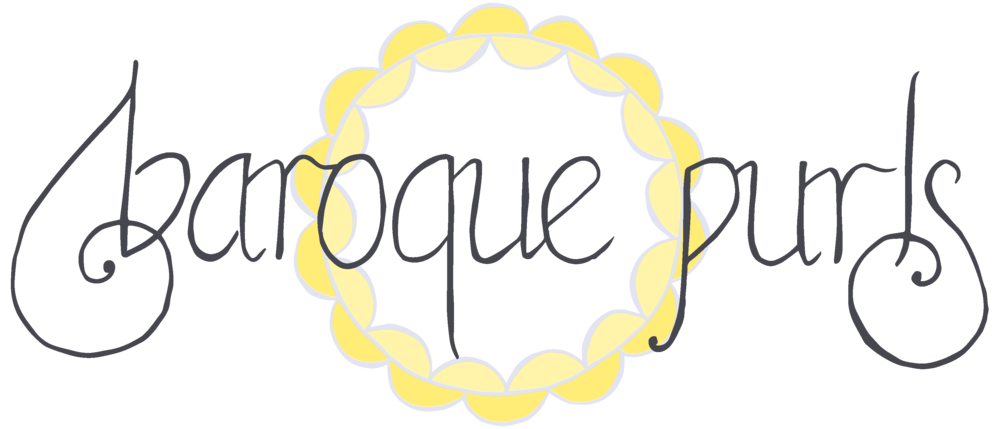As promised, here is the tale of how I got the colours to pool so nicely in my smaller Rainbow Cake hat. The pastel rainbow colours of the yarn (Madelinetosh's Pure Merino Worsted in 'Pocket Rainbow') practically demanded that I have a go at controlled colour-pooling, and I couldn't be happier with the way it worked out. :)
The first step, of course, was swatching.
Read MoreI love a picot bind off on a shawl! The little picot-bumps along the edge add an extra dose of lacy prettiness, and it's also a nice and stretchy method, which makes it perfect to use with lace. Two of my shawl designs call for a picot bind off: Budburst and Liquid Honey.
The picots are created by casting on a few extra stitches, and then binding off normally to the place you want your next picot to be. Casting on more stitches creates a larger picot, and binding off more stitches spaces them further apart.
Read MoreHere's the situation: you've just finished knitting something with fantastic texture, either in cables or knits-and-purls, and now you need to block it. Wet-blocking, where you soak the project before laying/pinning it out to dry, can really flatten out texture, especially if you've used a yarn that doesn't 'bounce back' much once it's dry (like an alpaca or silk blend).
I had just this dilemma when I finished my Beeswax Scarf! I had wet-blocked my swatch and been disappointed by how flattened-out it was. Obviously, I was keen to try a different blocking method that would preserve more of the lovely texture!
Read MoreSwatching in the round is something I know I should do if my project will be knit in the round, but I admit I sometimes swatch flat instead, especially if the stitch pattern is easy to work flat (like stockinette or a knit/purl texture). But for an important project like a garment or something else that will take a lot of yarn and time, there's no way around it - swatching in the round will give you the most accurate gauge information.
In this post I'll be showing you how I knit the swatch for my Cinnamon Stars cowl. The method will work for any stranded colourwork project, and for any other project knit in the round.
Read More
